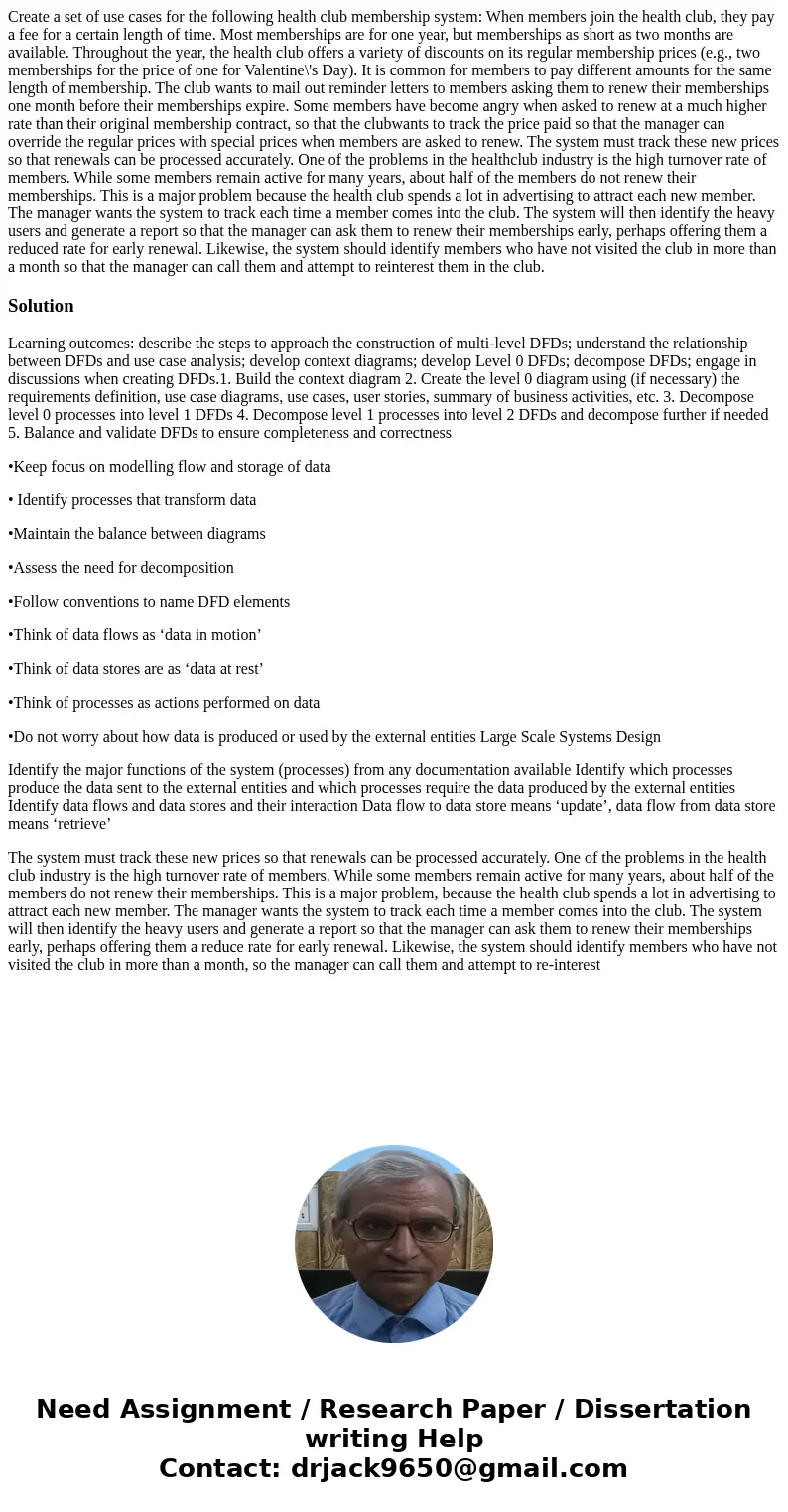Create a set of use cases for the following health club memb
Create a set of use cases for the following health club membership system: When members join the health club, they pay a fee for a certain length of time. Most memberships are for one year, but memberships as short as two months are available. Throughout the year, the health club offers a variety of discounts on its regular membership prices (e.g., two memberships for the price of one for Valentine\'s Day). It is common for members to pay different amounts for the same length of membership. The club wants to mail out reminder letters to members asking them to renew their memberships one month before their memberships expire. Some members have become angry when asked to renew at a much higher rate than their original membership contract, so that the clubwants to track the price paid so that the manager can override the regular prices with special prices when members are asked to renew. The system must track these new prices so that renewals can be processed accurately. One of the problems in the healthclub industry is the high turnover rate of members. While some members remain active for many years, about half of the members do not renew their memberships. This is a major problem because the health club spends a lot in advertising to attract each new member. The manager wants the system to track each time a member comes into the club. The system will then identify the heavy users and generate a report so that the manager can ask them to renew their memberships early, perhaps offering them a reduced rate for early renewal. Likewise, the system should identify members who have not visited the club in more than a month so that the manager can call them and attempt to reinterest them in the club.
Solution
Learning outcomes: describe the steps to approach the construction of multi-level DFDs; understand the relationship between DFDs and use case analysis; develop context diagrams; develop Level 0 DFDs; decompose DFDs; engage in discussions when creating DFDs.1. Build the context diagram 2. Create the level 0 diagram using (if necessary) the requirements definition, use case diagrams, use cases, user stories, summary of business activities, etc. 3. Decompose level 0 processes into level 1 DFDs 4. Decompose level 1 processes into level 2 DFDs and decompose further if needed 5. Balance and validate DFDs to ensure completeness and correctness
•Keep focus on modelling flow and storage of data
• Identify processes that transform data
•Maintain the balance between diagrams
•Assess the need for decomposition
•Follow conventions to name DFD elements
•Think of data flows as ‘data in motion’
•Think of data stores are as ‘data at rest’
•Think of processes as actions performed on data
•Do not worry about how data is produced or used by the external entities Large Scale Systems Design
Identify the major functions of the system (processes) from any documentation available Identify which processes produce the data sent to the external entities and which processes require the data produced by the external entities Identify data flows and data stores and their interaction Data flow to data store means ‘update’, data flow from data store means ‘retrieve’
The system must track these new prices so that renewals can be processed accurately. One of the problems in the health club industry is the high turnover rate of members. While some members remain active for many years, about half of the members do not renew their memberships. This is a major problem, because the health club spends a lot in advertising to attract each new member. The manager wants the system to track each time a member comes into the club. The system will then identify the heavy users and generate a report so that the manager can ask them to renew their memberships early, perhaps offering them a reduce rate for early renewal. Likewise, the system should identify members who have not visited the club in more than a month, so the manager can call them and attempt to re-interest

 Homework Sourse
Homework Sourse